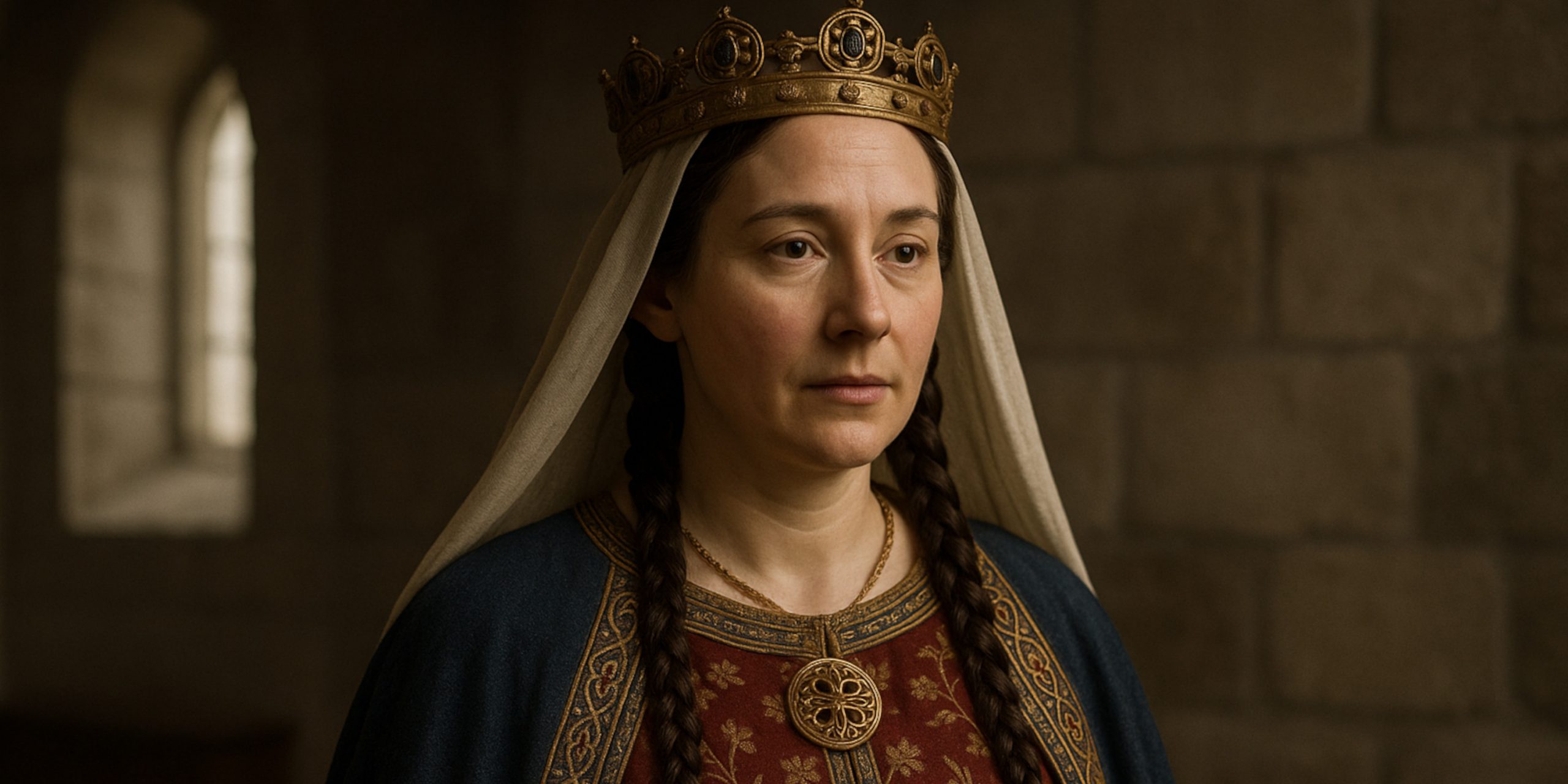
Emma of Normandy was a queen, a diplomat, and a political survivor in a time of violent upheaval. Twice crowned and central to the dynastic shifts of early medieval England, she played a far more active role than most royal women of her age. Born into Norman nobility, she became queen to two English kings and mother to two more, her influence stretching across decades of conflict and conquest.
Early Life and Background
Emma was born around 985 into the ducal house of Normandy, the daughter of Richard I, Duke of Normandy, and most likely his wife Gunnor. Her Norman roots would become vital in connecting the English and Norman courts, especially in the years leading up to the Norman Conquest.
She was brought to England around 1002 to marry Æthelred the Unready, a match designed to strengthen ties between England and Normandy against the threat of Viking attacks. She was given the Anglo-Saxon name Ælfgifu, although in contemporary and later sources she is nearly always referred to as Emma.
Queenship and Marriage to Æthelred
Emma’s first marriage, to King Æthelred II, was defined by political instability and increasing Viking pressure. Æthelred’s rule was marked by ineffectiveness and brutal reprisals against the Danes living in England, most notoriously the St Brice’s Day massacre of 1002, the very year of his marriage to Emma.
From this marriage came at least three children: Edward (later Edward the Confessor), Alfred, and a daughter, Godgifu. Following the death of Æthelred in 1016, the Danish prince Cnut invaded and took control of England, ultimately forcing Emma into a new marriage.
Marriage to Cnut the Great

In a striking act of political adaptability, Emma married Cnut the Great in 1017. The marriage gave legitimacy to his new rule and helped to unite the English and Danish factions. With Cnut, Emma had at least two children, including Harthacnut, who would later reign briefly over England and Denmark.
Emma maintained considerable influence during Cnut’s reign. She was granted lands, held her own court, and acted as a patron of religious institutions. The marriage also solidified her as a rare figure: a queen consort to two successive, rival kings.
Political Intrigue and Dynastic Struggles
After Cnut’s death in 1035, England faced yet another crisis of succession. Emma supported the claim of her son Harthacnut over Cnut’s other son, Harold Harefoot. During this period, she issued a compelling text, Encomium Emmae Reginae, likely commissioned in 1041 to promote her sons’ legitimacy and her own role in the royal lineage.
The Encomium offers insight into how Emma wanted to be seen: not just as a passive consort, but as a stabilising and guiding presence amid England’s volatile politics.
Emma’s position weakened temporarily during Harold Harefoot’s rise, when she was briefly exiled. She returned to power after Harthacnut secured the throne in 1040, but her influence declined following his death in 1042 and the accession of her son by Æthelred, Edward the Confessor.
Although mother and son were reunited, their relationship was strained. Emma was accused of hoarding royal treasure and eventually removed from court affairs. She died in 1052, aged around 67, and was buried in Winchester, a royal and ecclesiastical centre.
Arms and Authority
Though not a warrior, Emma’s authority was often depicted visually. Surviving manuscript illustrations and charters show her enthroned and veiled, a symbol of legitimacy and dynastic continuity. She issued charters in her own name, an unusual practice for a queen consort, and was a visible participant in ceremonial and political life.
Legacy and Historical Impact
Emma’s life reflects the complexity of early medieval queenship. She held power across three reigns, navigated political upheavals, and left behind one of the earliest examples of royal self-promotion in English history. Her descendants would define the English monarchy for generations, most notably through Edward the Confessor and the eventual succession crisis that led to the Norman Conquest.
Where to See Artifacts and Recent Archaeology
- Winchester Cathedral: Emma’s burial site is located here. Though much of the original tomb has been lost or altered, the cathedral remains a central location linked to her legacy.
- British Library: Holds the original manuscript of the Encomium Emmae Reginae, an invaluable resource for understanding her narrative and ambitions.
- Winchester and Old Minster excavations: Archaeological digs in Winchester, where she spent much of her later life, have revealed remains and structures tied to the royal court during Emma’s era.
Recent scholarship has revisited Emma’s career with a more critical eye, recognising her agency in shaping not just her own destiny but also the succession and identity of the English monarchy itself.
Emma of Normandy was no mere figurehead. She was a queen twice over, a mother to kings, and a shrewd political operator in a world where power was contested at every turn.
Watch the documentary:



